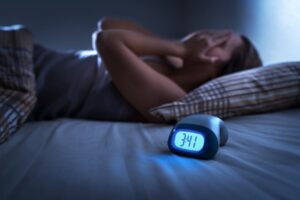
Sleep is essential to good health, yet for millions of people, restful nights are disrupted by a condition known as sleep apnea. At the same time, type 2 diabetes remains one of the most prevalent chronic diseases worldwide. While these two conditions may seem unrelated at first glance, a growing body of research has uncovered a strong connection between them, suggesting that managing one may significantly impact the other.
What is Sleep Apnea?
Sleep apnea is a disorder in which a person’s breathing repeatedly stops and starts during sleep, often due to the collapse of soft tissue in the throat. This leads to fragmented sleep, reduced oxygen levels, and a host of health consequences.
Common symptoms include loud snoring, gasping for air during sleep, and excessive daytime fatigue. On the other hand, type 2 diabetes is characterized by insulin resistance and high blood sugar levels, typically associated with lifestyle factors such as poor diet, lack of physical activity, and obesity.
How Are These Two Conditions Linked?
Firstly, obesity is a shared risk factor. Excess weight, particularly around the neck and upper body, can increase the likelihood of airway obstruction during sleep, leading to sleep apnea. At the same time, obesity is one of the strongest predictors of type 2 diabetes, making it a central connecting point between the two conditions.
Beyond shared risk factors, sleep apnea itself can directly worsen blood sugar control. When breathing is interrupted during sleep, the body experiences reduced oxygen levels, which can trigger a stress response. This stress response releases hormones like cortisol and adrenaline, which increase blood glucose levels and promote insulin resistance. Over time, this can either contribute to the development of type 2 diabetes or make existing diabetes harder to control.
Moreover, poor sleep quality caused by apnea can negatively affect metabolic regulation. People with sleep apnea often feel tired and unrefreshed, which can lead to reduced physical activity, poor dietary choices, and weight gain – all of which further exacerbate insulin resistance and blood sugar problems.
Catch-22
The connection also works in reverse. People with type 2 diabetes are at higher risk of developing sleep apnea. High blood sugar levels can cause inflammation and neuropathy, which may impair the function of the muscles that keep the airway open. Additionally, diabetes can lead to fluid retention and fat deposition around the neck, further increasing the risk of airway obstruction during sleep.
What Kind of Treatment is Available?
The good news is that treating one condition can help manage the other. Oral appliances, like EMA Snore Guards, shift the lower jaw so the airway stays open all night and are much less invasive compared to CPAP machines. Likewise, managing diabetes through lifestyle changes, weight loss, and medication can reduce the severity of sleep apnea.
The link between type 2 diabetes and sleep apnea is a significant yet often overlooked aspect of managing both conditions. If you have one, it’s important to be screened for the other. By recognizing this connection, patients and healthcare providers can take a more comprehensive approach to treatment, leading to better sleep, improved blood sugar control, and overall enhanced quality of life.
About the Practice
Are you experiencing symptoms of sleep apnea? Smileworks General & Cosmetic Dentistry can outfit you with a custom-made sleep appliance that’s a proven alternative to CPAP therapy, allowing you to get a restful night’s sleep without snoring. Not only will you thank us, but your loved one will, too! Schedule your appointment through our website or give our Mt. Pleasant office a call at (843) 654-7300.


